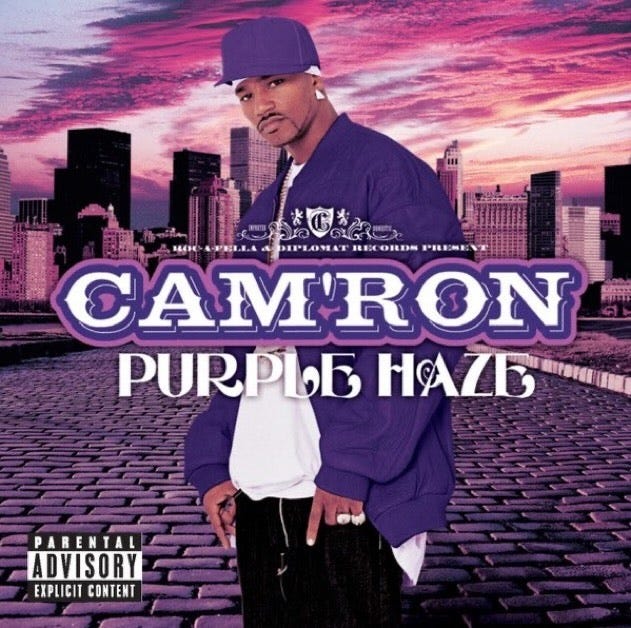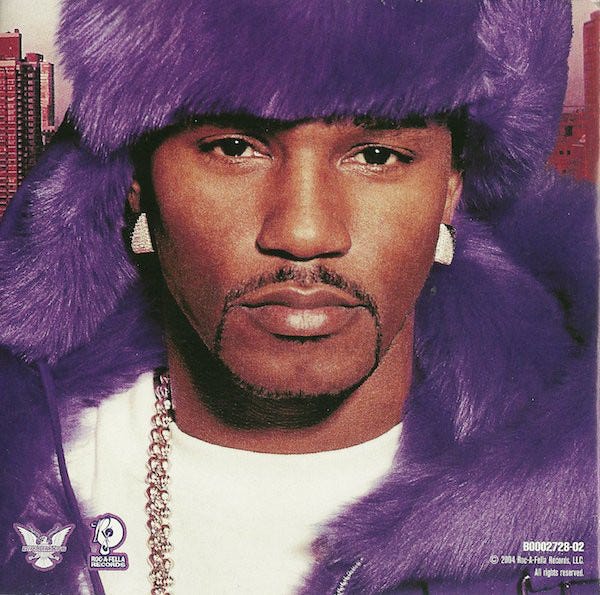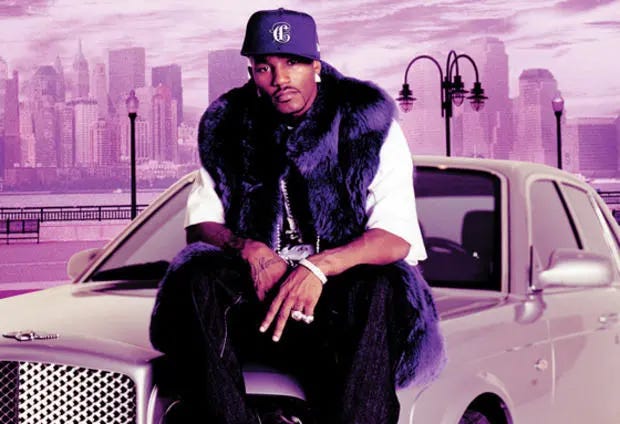The Lasting Impact of Cam’ron’s Purple Haze: A Transformative Force in Hip-Hop and Pop Culture
Happy 20th Anniversary, Purple Haze
Purple Haze’s 20th Anniversary
Twenty years ago, on December 7, 2004, Diplomat Records and Roc-A-Fella Records released rapper Cam’ron’s fourth studio album, Purple Haze. The album debuted at number 20 on the Billboard 200, selling 123,000 copies in its first week. Memorable tracks such as “Get ‘Em Girls,” “Down and Out,” “Killa Cam,” “Girls,” and “Family Ties” contributed to the album being certified Gold by the Recording Industry Association of America (RIAA).
Purple Haze received generally positive reviews from music critics. David Drake of Stylus Magazine praised the album for its “bombastic production and surreal lyricism,” noting Cam’s “unique brand of idiosyncratic gangsta,” which he found wildly engaging due to its absurd, poker-faced delivery. He concluded, “Purple Haze is such a twisted take on gangsta that it has to be heard to be believed.”
Blender contributor Jonah Weiner highlighted how the production throughout the record varies from “aggressively insane” tracks like “Shake” to “adoring pop” in the Cyndi Lauper-interpolating “Girls Just Wanna Have Fun.” He noted that Cam matches this balance with wordplay that combines “Missy gibberish swathed in 50 Cent menace,” concluding that he “writes pop hooks and avant-garde rhymes while staying as close to the streets as a manhole cover.”
Chris Ryan from Spin credited Cam with tightening his signature flow, choosing high-quality and risk-worthy beats, and maintaining listener interest while delivering “Harlem symbolism and non-sensical muttering” throughout the album.
Purple Haze’s Cultural Impact on Hip-Hop and Pop Culture
Cam’ron’s Purple Haze had a significant cultural impact on pop culture and hip-hop, influencing artists and shaping the genre’s direction in the years that followed. Released at a time when East Coast hip-hop was experiencing a resurgence, the album not only showcased Cam’ron’s unique artistic voice but also opened doors for a more eclectic and diverse style in mainstream rap.
One of the most notable aspects of Purple Haze is its bold and innovative production, which blended various genres, setting a precedent for future artists to experiment with their sound. The album’s mix of hard-hitting beats and unconventional samples paved the way for a more genre-bending approach in hip-hop, encouraging artists to draw from various influences.
Lyrically, Cam’ron’s use of surrealism and playful wordplay challenged traditional narratives in rap, leading to the rise of a more abstract style that many contemporary artists have adopted. His playful yet tough persona resonated with a generation of fans, contributing to the growth of the “diplomatic” lifestyle that blended luxury with street authenticity. This duality appealed to hip-hop audiences and influenced broader pop culture, where streetwear, high fashion collaborations, and lifestyle aesthetics merged.
Furthermore, Purple Haze became a cultural touchstone that sparked conversations about representation and authenticity in hip-hop. Cam’ron’s embrace of his unique Harlem roots and distinctive flair showcased the importance of individuality in a genre that often faced pressures to conform. This encouraged upcoming artists to embrace their styles and stories, creating a more inclusive environment within the industry.
In addition, the album included memorable collaborations with other artists, further solidifying its impact. Tracks like “Get ‘Em Girls” and “Down and Out” not only became hits but also showcased the power of collaboration in bringing together different sounds and fan bases, ultimately expanding the reach of hip-hop.
Overall, Purple Haze’s cultural impact endures, as its influence can be seen in many modern artists who prioritize creativity, authenticity, and a willingness to push boundaries in their music.
Purple Haze’s Legacy
The legacy of Cam’ron’s Purple Haze remains significant in the landscape of hip-hop and pop culture, as it marked a transformative moment in the genre. The album showcased Cam’ron’s distinctive style and voice, which were pivotal in shaping the direction of East Coast hip-hop during a time of resurgence.
One of the album’s most impactful legacies lies in its bold and innovative production. By blending various genres and introducing unconventional samples, Purple Haze set a precedent for future artists to experiment with their sound. This genre-bending approach expanded the musical landscape and inspired hip-hop artists to explore various influences, fostering a more prosperous and diverse musical environment.
Lyrically, Cam’ron’s unique use of surrealism and playful wordplay challenged traditional narratives in rap, promoting a more abstract style that many contemporary artists have since adopted. His blend of toughness and humor resonated with fans and cultivated a new aesthetic within the genre that celebrated individuality and authenticity. This shift influenced hip-hop and seeped into broader pop culture, where elements like streetwear and high-fashion collaborations became more prominent, empowering artists to express themselves authentically.
Furthermore, Purple Haze played a crucial role in discussions about representation in hip-hop. Cam’ron’s celebration of his Harlem roots and distinctive persona encouraged artists to embrace their unique styles and stories, which fostered a more inclusive and diverse environment in the music industry and inspired a new generation of musicians to express themselves authentically, highlighting the album’s significant social impact.
The album also highlighted the power of collaboration with memorable tracks featuring various artists, emphasizing how collaborative efforts could bridge different sounds and fan bases. This aspect remains influential in hip-hop, where features and partnerships expand artists’ reach and creativity.
Overall, Purple Haze’s enduring impact is evident in the work of numerous modern artists who prioritize authenticity, creativity, and boundary-pushing in their music. Its cultural significance and influence on the genre ensure that Cam’ron’s fourth studio album continues to be celebrated and referenced today.
By Shamarie Knight






